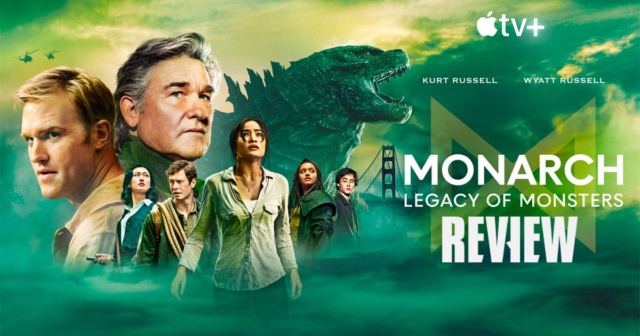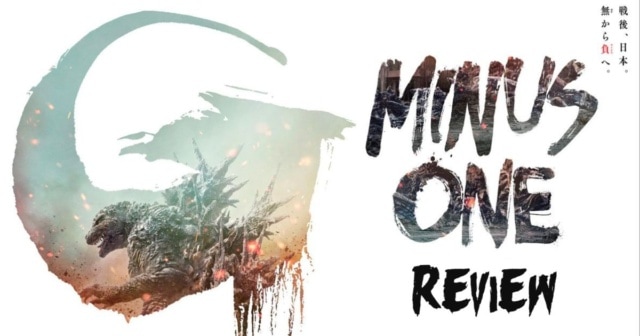Ranking All The Live-Action Toho Godzilla Movies

With Godzilla: Minus One making its way to movie theatres very soon and Monarch: Legacy of Monsters releasing on AppleTV+, I embarked on a rather ambitious project in preparation: watch every live-action Godzilla movie produced by Toho and rank them from worst to best. Before this project, I had already seen Hideaki Anno and Shinji Higuchi’s Shin Godzilla alongside the animated Netflix trilogy, with the MonsterVerse features being my first exposure(s) to the Big G himself. After going through each film from the Showa, Heisei, and Millennium eras, I now have an even bigger understanding of who Godzilla is and the multiple iterations he embodied for almost seventy years on screen. Suffice it to say that the American counterparts have never matched the creativity of how Toho embodied the character since its inception.
The animated movies and American adaptations of Godzilla will not be included in this specific ranking. The Showa era movies are available to watch via The Criterion Collection’s Showa Era films set, with each movie restored and remastered to its fullest potential. Most original versions of the movies are also available to watch freely on the Internet Archive, while English dubbed versions are also available on video-on-demand. However, it’s best if you go through all of these movies that you watch them in Japanese.
Without any further ado, let’s find out how I rank the twenty-nine live-action Godzilla films made from 1954 to 2016.
#29: All Monsters Attack (1969)
It should be no surprise to anyone who plowed through the Godzilla franchise that All Monsters Attack is the nadir of the Godzilla movies, far worse than the 1998 Roland Emmerich Godzilla adaptation. At least that one has new footage, while All Monsters Attack repurposes scenes from past Godzilla films and posits the Monsters as imaginary creatures who are part of a film franchise instead of real ones.
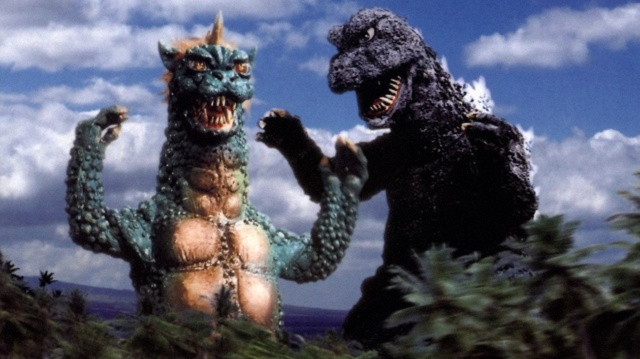
We follow Ichiro (Tomonori Yazaki) as he dreams about being on Monster Island with a TALKING Minilla (enough to give anyone nightmares) as he seeks advice on defeating his school bullies. That’s right, Godzilla is an anti-bullying counselor, with Ichiro taking them down by imitating Godzilla’s roar at the end of the film.
It also shoehorns a subplot involving two wanted criminals, which Ichiro stops by devising Home Alone-esque traps on them. Some of it is mildly amusing, but it has nothing to do with how Godzilla was originally portrayed or how he was repurposed in subsequent Ishiro Honda movies. Here’s hoping talking Minilla burns in hell as we speak.
#28: Godzilla, Mothra and King Ghidorah: Giant Monsters All-Out Attack (2001)
While it certainly has lots of great practical effects and action scenes that elevate the camp factor to a thousand, Godzilla, Mothra, and King Ghidorah: Giant Monsters All-Out Attack suffers from a nonsensically dull human story with one-dimensional characters that are immensely hard to attach once the monster stuff starts to crank itself out. It isn’t the first time the Godzilla franchise delved into mysticism, but it’s treated here in the least interesting way possible and made the overall experience feel increasingly boring instead of exciting and fun.
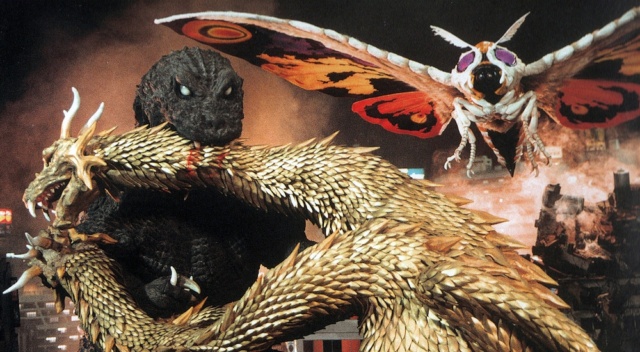
#27: Terror of Mechagodzilla (1975)
Ishiro Honda’s final contribution to the Godzilla franchise is a ridiculously inert and lackadaisical film that starts with a literal BANG! (a huge explosion introducing us to its title card) before grinding down to a massive halt. A sea dinosaur fights against random alien/human hybrids, while the titular character only appears in the last fifteen minutes of the movie. It’s almost as if the filmmakers forgot this was a Mechagodzilla film because he serves no purpose to the story.
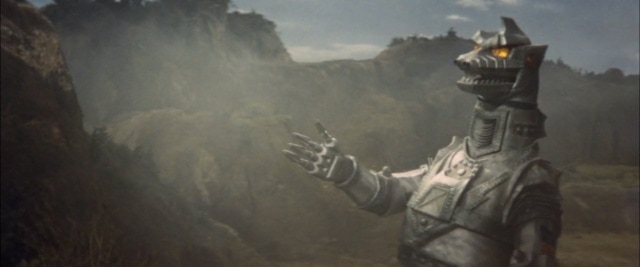
#26: Godzilla vs. Megaguirus (2000)
Also known as Godzilla vs. Megaguirus: The G-Annihilation Strategy, the film is an insult to the legacy of Ishiro Honda’s Godzilla, retconning a key moment from the original film and doing absolutely nothing of interest with it.
The plot is far too confusing and scattershot to feel invested, and the action scenes are some of the most repetitive this franchise has seen. Godzilla gets stabbed in the crotch so often by Megaguirus that it eventually becomes hilarious. It’s historically known as one of the worst Godzilla movies for a reason.
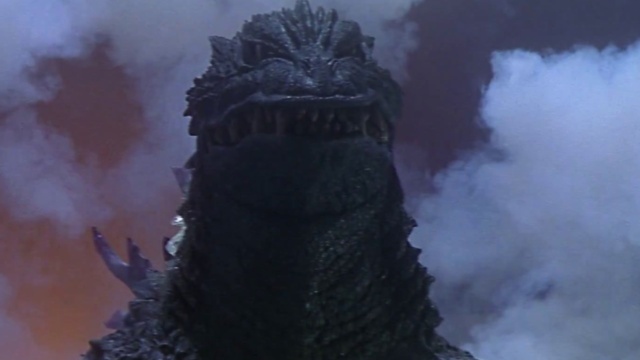
#25: Godzilla vs. Mechagodzilla (1974)
See, when a movie is called Godzilla vs. Mechagodzilla, I expect it to be about Godzilla fighting Mechagodzilla, not Humans vs. B-characters from Planet of the Apes and King Caesar. Oh yes, humans fight against a race of aliens who are literal apes controlling Mechagodzilla, who sparsely appears in the movie.
King Caesar has a bigger antagonistic role than Mechagodzilla in this. Worse yet, the fights are terribly dull and repetitive. A recurring theme that occurred far too many times in the Showa Era.
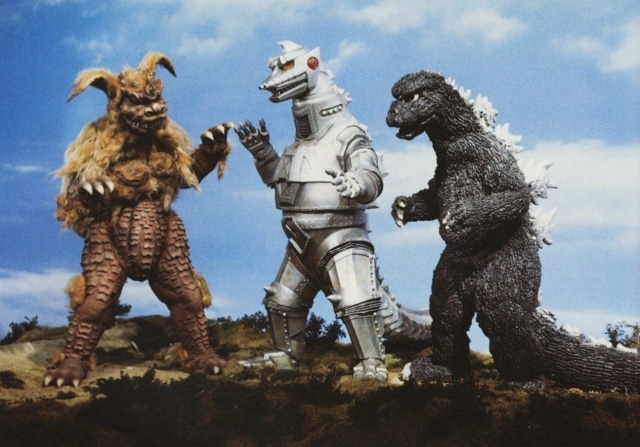
#24: Godzilla 2000 (1999)
The beginning of the Millennium Era saw the Godzilla franchise use CGI for the first time, and the results are as abysmal as you think. At times, the Godzilla creature is a “man in a suit,” and it’s as good as it was in the Heisei era pictures. But plenty of sequences feature a horribly rendered and lifeless CGI Godzilla, effectively removing any sense of tension and dread that audiences have when they see the Big G for the first time since Godzilla vs. Destoroyah.
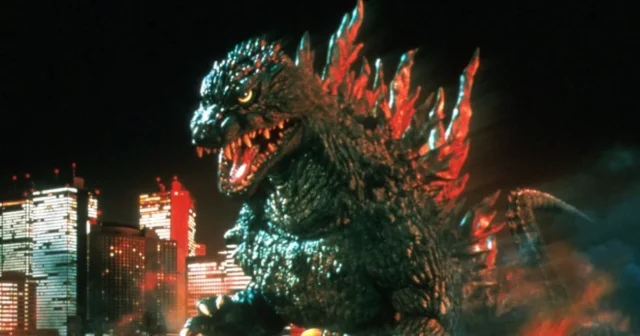
#23: Son of Godzilla (1967)
The first apparition of Minilla is one of the most terrifying. What could’ve been a charming little capsule in the Godzilla franchise is an overtly silly installment that removes some of the larger stakes of past movies for a more light-hearted, kid-friendly entry. There’s just one problem: Minilla will give you nightmares. At least he doesn’t talk in this one.
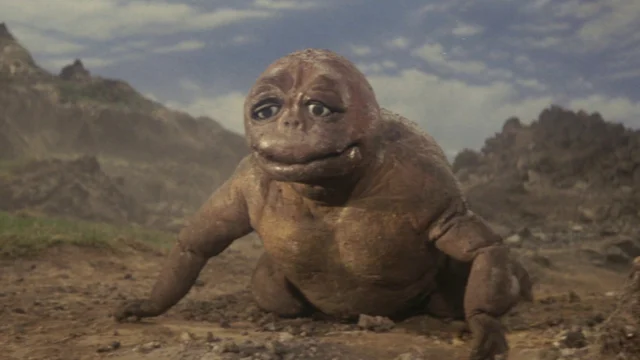
#22: Invasion of Astro-Monster (1965)
AKA the one where Godzilla does a lil dance. Possibly one of the few good moments of this otherwise extremely boring movie, with some of the worst acting from the franchise in Nick Adams’ badly dubbed American protagonist and a plot so galaxy-brained no sane human being could’ve ever come up with it. However, this will not be the last time we will see the Xilians appear in the franchise, and their later iteration will be far more special than what Ishiro Honda and screenwriter Shinichi Sekizawa came up with.
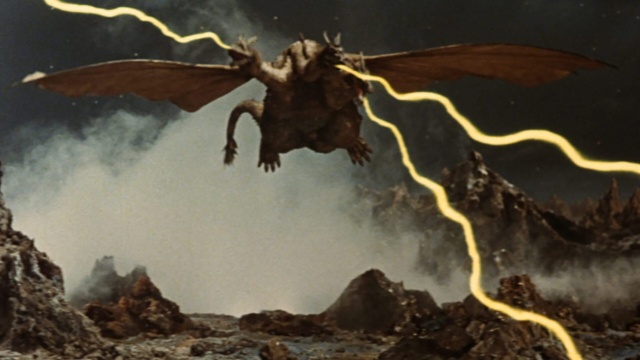
#21: Godzilla vs. Gigan (1972)
AKA the one where they make Godzilla bleed. And once again, the only good part of this movie. For the first time, Toho made Godzilla appear vulnerable (though it won’t be the last time they do so) in his brutal fight against Gigan. However, for most of the runtime, we have to sit through a boring human story where the main characters fight off… cockroaches.
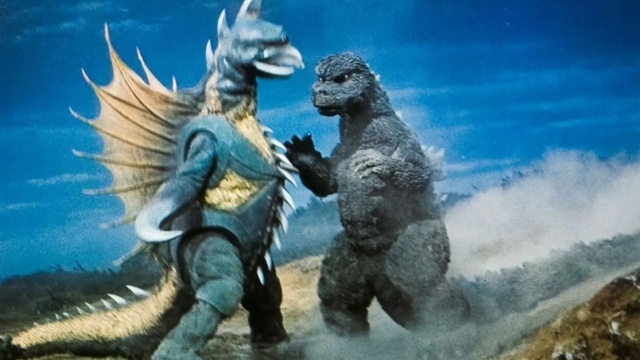
Yes, the villains of this film are smart cockroaches who can appear human. But they make Godzilla and Anguirus talk in this one through speech bubbles, with the latter responding to Godzilla’s commands with “OK!” What were they smoking?
#20: Mothra vs. Godzilla (1964)
Mothra vs. Godzilla isn’t a particularly good film when it comes to the storytelling department, with one of the series’ most galaxy-brained installments yet, but the film more than makes up for its storytelling shortcomings with some incredible action sequences and one of Godzilla’s most menacing iterations in his early days. Akira Ifukube’s musical cue as he returns from the dead remains an all-timer and a recurring motif audiences will hear throughout the series.
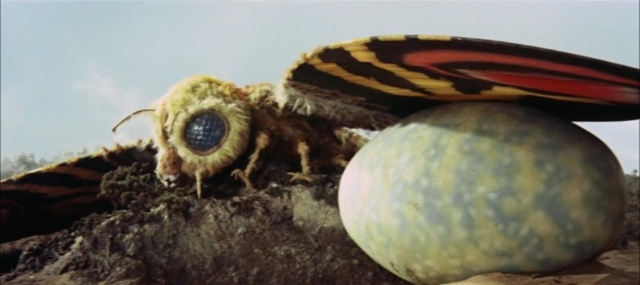
#19: Godzilla vs. King Ghidorah (1991)
This one is WILD because it’s about time-traveling Aliens who run in their version of the Chronosphere to alter time and space to ensure Godzilla doesn’t exist. There’s also a scene where Major Arnold Spielberg sees an alien from outer space and passes it to his son, Steven, who will grow and become one of the greatest filmmakers this world has ever known.
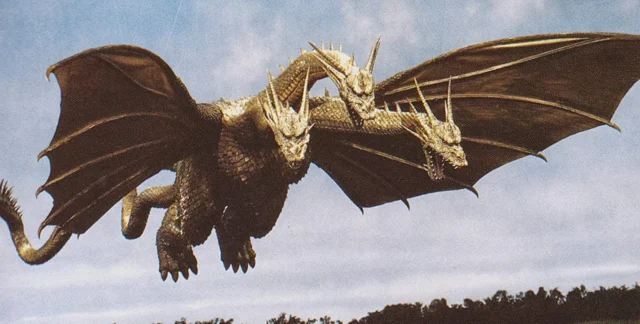
It gets increasingly wilder when you’ve got a character who’s an actual psychic (more on that later) and has a strong connection with Godzilla. The plot is all over the place and makes very little sense, but the action and practical effects are some of the best this franchise has seen in its Heisei era.
#18: King Kong vs. Godzilla (1962)
The first major crossover of sorts in the Godzilla franchise that’s also a satire on the media’s fascination with large creatures as attractional figures, Ishiro Honda’s King Kong vs. Godzilla delivers on the titular brawl between two of the most iconic monsters in film history, although his satire is too surface-level to make an impact.
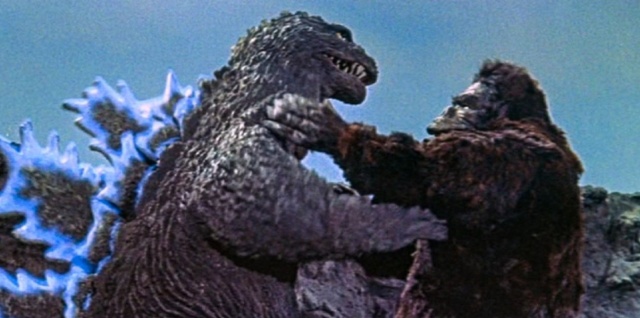
Still, the fight on Mount Fuji is one of the franchise’s most influential. This film serves as the quasi-basis for Hollywood to readapt the story in 2021 with Adam Wingard’s Godzilla vs. Kong, with a sequel planned to release in 2024.
#17: Godzilla Raids Again (1955)
Released a year after Ishiro Honda’s Godzilla, Godzilla Raids Again aimed to primarily cash in on the popularity of the Big G without much care for storytelling. That’s why none of the human stuff is particularly good, but the fight scene between Anguirus and Godzilla is one of the most impressive. The fight between the two posited the franchise’s subsequent movies, where Godzilla fights against another popular monster, instead of making him an allegory for the Nuclear War like Honda himself introduced him as.
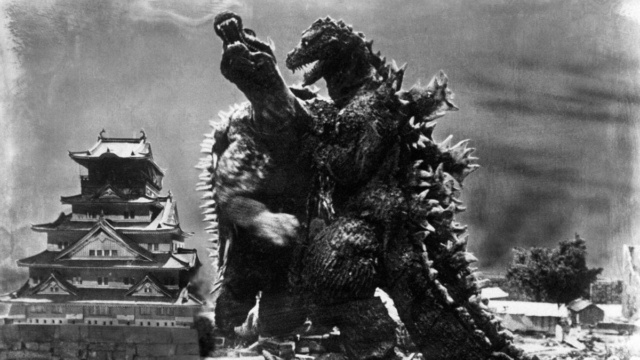
#16: Godzilla vs. Biollante (1989)
Godzilla vs. Biollante is one of the Heisei era’s most important films, as it introduces audiences to Miki Saegusa (Megumi Odaka), the aforementioned psychic who will eventually become the franchise’s main character and anchoring point, appearing in every Heisei film with the exception of The Return of Godzilla.
Miki’s connection with Godzilla will deepen from film to film. But we get a glimpse of her powers in this film, with a group of psychic children accurately predicting the latest return of Godzilla in one of the franchise’s most potent moments.
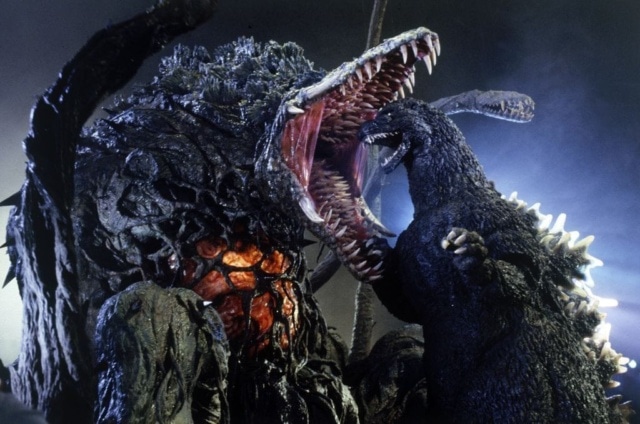
The fight between Biollante is incredibly generic, but the human story this time around is more refined. This will develop itself further in subsequent movies.
#15: Godzilla vs. Mothra (1992)
A reinterpretation of Ishiro Honda’s Mothra vs. Godzilla, done far better than it has any right to be. The practical effects are out-of-this-world, and the action sequences rank high as some of the best the Godzilla series ever offered. Some of the human drama is a bit undercooked, but it never ceases to entertain. Out of all of the wild and zany stuff presented in the series thus far, Miki Saegusa continues to be the most plausible “powerful” character of the bunch.
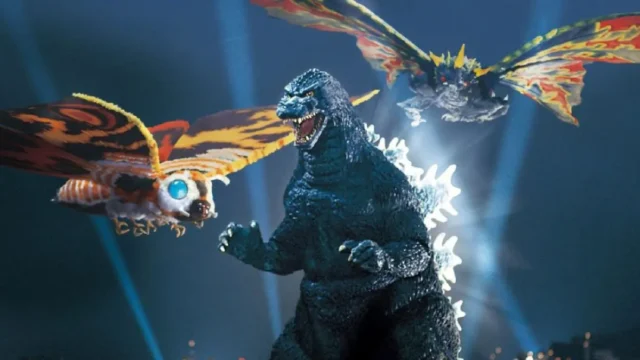
#14: Godzilla vs. SpaceGodzilla (1994)
AKA the one where they crank up Miki Saegusa’s powers from psychic to telekinetic. Admittedly, the weakest part of the movie this time (though Odaka is consistently great throughout her appearances). The central fight scenes between Godzilla and SpaceGodzilla, with the longest climax of the franchise, hammer home its larger stakes.
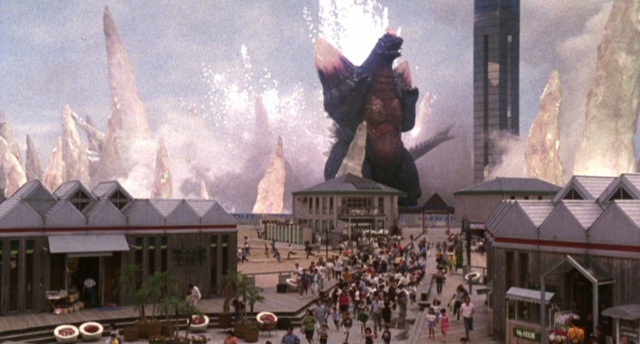
Plus, it’s the only Godzilla movie to feature an end credits song, as Godzilla peacefully walks away from the battle, permanently scarred. It’s the last time audiences will see a “traditional” Godzilla story before the filmmakers deftly subvert it with the last installment of the Heisei era.
#13: Godzilla Against MechaGodzilla (2002)
The leanest and meanest Godzilla movie of the franchise, clocking in at a brisk 88 minutes and never overstaying its welcome. It brilliantly presents the threat within its first act, and it’s all action from there. The Millennium era’s earlier movies over-relied on CGI, while this one brings back Godzilla to his practical glory days.
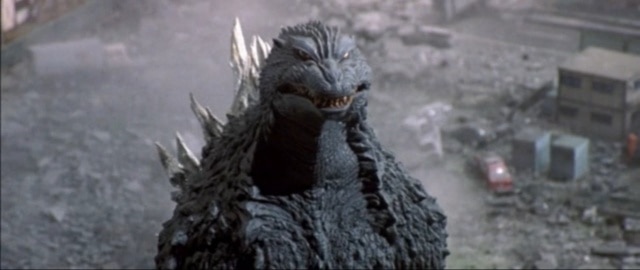
Ensuring massive weight in the action and legitimate stakes as Godzilla, once again, he fights a more vicious variation of MechaGodzilla, who now acts sentient and has a mind of its own. Guess the government didn’t think of that, but constructing it through old Godzilla’s dead bones wasn’t a good idea to begin with…
#12: Godzilla (1954)
Ah, yes, the one that started it all. Audiences nowadays go, “This wasn’t about Godzilla” after watching the movie, which is exactly the point. Godzilla isn’t the main point of focus, but its social commentary on mankind digging themselves in a grave as they continue to extinguish the planet.
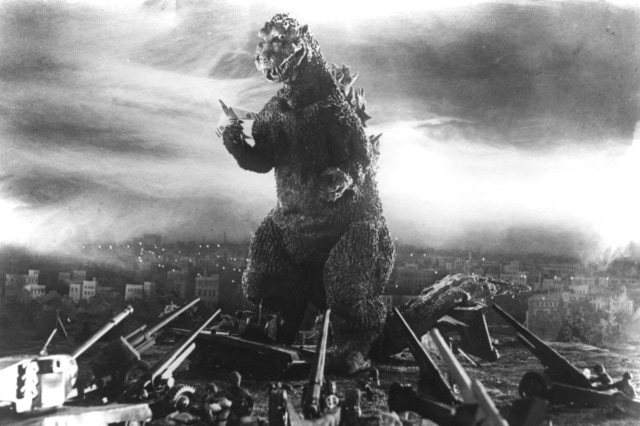
Even the “Oxygen Destroyer,” the Godzilla-destroying weapon that recurs throughout the franchise, has a deeper connotation that rings even truer today in an era increasingly threatened by mankind-driven climate change. How it holds up even more 69 years after release is incredible, and the movie Don’t Look Up wished it was.
#11: Destroy All Monsters (1968)
The first Avengers: Endgame of Monster movies, where Toho rounded up each monster introduced in past Godzilla films (and some from other Toho Kaiju Eiga) for one final showdown. It’s as awesome as you think it’s going to be. Perhaps this is Ishiro Honda’s clearest movie from a directorial point of view regarding crafting the fight scenes because they feel completely alive and benefit from the human story behind it. And since Minilla is barely in it, audiences will sleep soundly after viewing it.
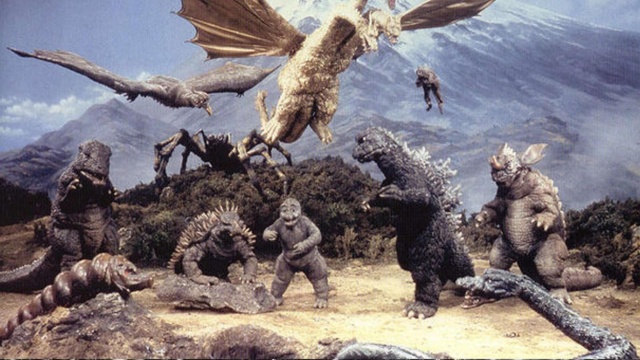
#10: Ebirah, Horror of the Deep (1966)
AKA the one where Godzilla and Ebirah play Volleyball with rocks. This was Jun Fukuda’s first foray into the Godzilla franchise, and it’s absolutely mental. The imagination and sophistication that went into staging the fight scenes between Ebirah and Godzilla are beyond compare, even if the human story can sometimes be a bit undercooked. It didn’t much matter because those fights are out-of-this-world.
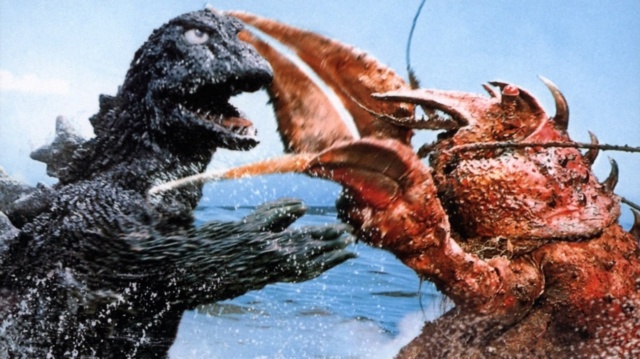
#9: Godzilla vs. Megalon (1973)
AKA the one where Godzilla does the DROPKICK!!!!! That’s already top ten material. Who would’ve thought something like this would look so cool instead of purely childish? Jun Fukuda, of course. Although it’s probably the most childish out of all of the Godzilla pictures, where Big G is more akin to a superhero than a terrifying Kaiju.
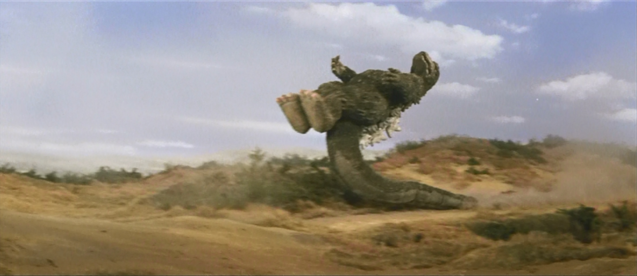
Hell, Jet Jaguar was created specifically for a child-friendly audience, where a robot hero teams up against Godzilla to fight off Megalon and Gigan. But things overcomplicate themselves in its mind-melting final act where Godzilla dropkicks Megalon not once, but twice. To me, that’s cinema.
#8: Godzilla: Tokyo S.O.S. (2003)
Before Toho went all in with Final Wars, they made another lean & mean entry in their Millennium franchise. This one highly benefited from the presence of Hiroshi Koizumi in his final contribution to the Godzilla franchise, reprising his role as Dr. Shinichi Chujo from 1964’s Mothra.
It also fixed the many problems that plagued earlier Millennium movies, with practical effects now fully taking over shoddily constructed CGI-driven sequences.
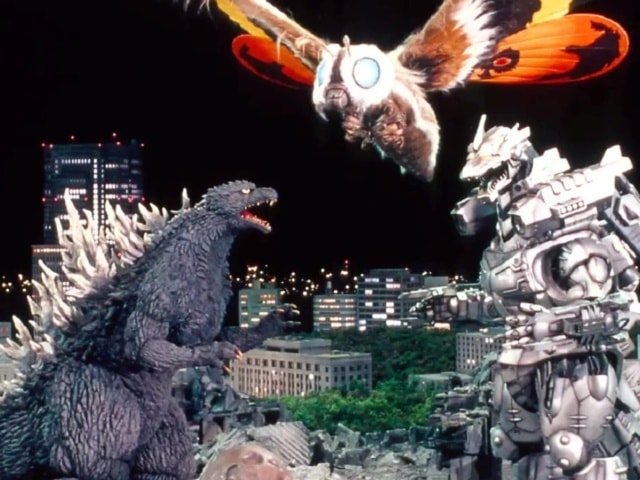
#7: Shin Godzilla (2016)
It would only be in 2016 that directors Hideaki Anno and Shinji Higuchi would actually perfect CGI Godzilla. He doesn’t look as refined as in the MonsterVerse pics, but that is far less distracting than in the Millennium movies and Roland Emmerich’s horrendous 1998 Godzilla.
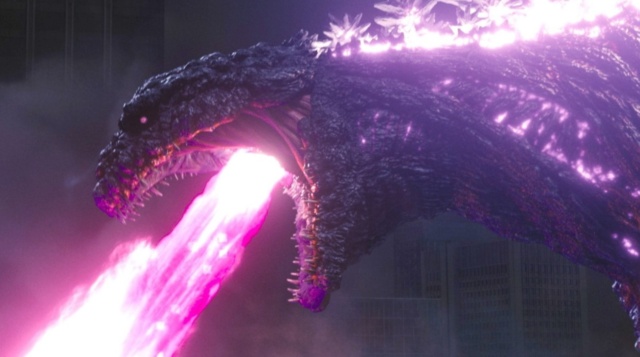
This one is far more talkative than most Godzilla movies, focusing on the political response to Godzilla than the monster himself, but it’s also part of why this movie is so good. In one of the best transitions to another sequence this franchise has seen, a government official reassures the population that the creature will not reach ground level… which it immediately does after he says it. Fantastic.
#6: Godzilla vs. Mechagodzilla II (1993)
Hey, they actually made a Godzilla vs. Mechagodzilla movie. No B-characters from Planet of the Apes here, but one of the most emotional sequences this franchise has seen, where Miki Saegusa is forced to strike Godzilla through the Mechagodzilla armor but is overpowered by its aura that she ultimately uses telepathy to drive him away from the battle.
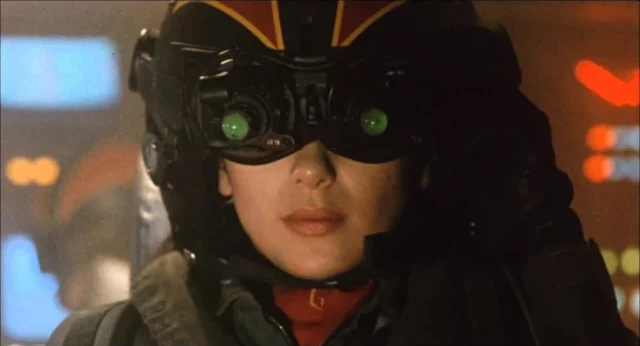
This is the film where they actively evolve her arc and make her a fully-formed protagonist. At first, her views on Godzilla are in line with the G-Force, but as the film progresses, she starts to have doubts about whether or not Godzilla is indeed friendly through her relationship with Baby (the Heisei era’s reinterpretation of Minilla, a far less terrifying creature). A deleted scene showed that shift far better than the movie, but it’s still clear by the picture’s end.
#5: Godzilla vs. Destoroyah (1995)
AKA the one where they kill Godzilla. From the minute it begins, something’s wrong with Godzilla, and throughout the movie, the characters consistently reaffirm that this is Godzilla’s final battle and final hour, closing the best era of movies this franchise has seen.
The movie also begins with Miki Saegusa, finally positing her as the protagonist she’s always been (if that wasn’t clear from the final battle in Godzilla vs. Mechagodzilla II already), discovering something wrong with Godzilla and Baby.
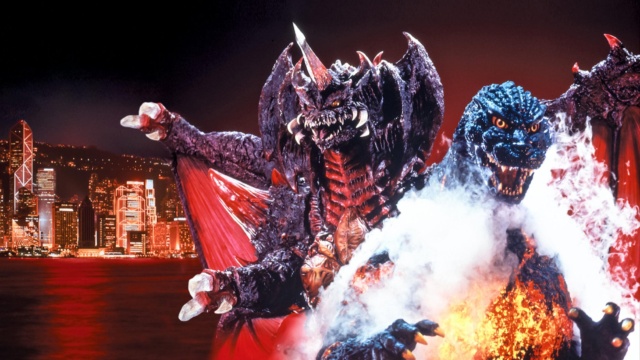
There’s already a sense of finality and dread from the minute it opens to his death scene, which makes you feel for him in ways you never thought were possible since the time he was introduced in the 1954 original. A shame that Sony had to screw this all up and bastardize the character in 1998, which forced Toho to come out of Godzilla retirement and introduce the Millennium era.
#4: Ghidorah, The Three-Headed Monster (1964)
This movie is incredible and the first that saw Ishiro Honda transition Godzilla from villain to hero. The scene where Mothra performs an intervention on Godzilla and Rodan to team up and fight off against King Ghidorah is an all-timer. An even more dangerous monster is out there threatening their survival (because who cares about the humans, right?), which sets the final fight in motion. Even the human stuff is intriguing here, too. A consistently riveting storyline, tight gunfights, it’s got it all. It’s increasingly bizarre, but it’s also tons of fun.
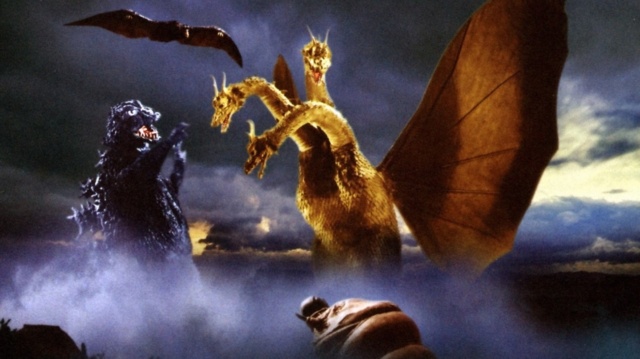
#3: The Return of Godzilla (1984)
Godzilla returns and acts as an agent of political paranoia. From the minute it opens, the film explores the implications of a Godzilla sighting (and attack) in Japan through its gubernatorial body, with more distance than Anno and Higuchi’s Shin Godzilla. Its documentary style adds to its authenticity until Godzilla shows up and swallows nuclear energy whole.
The rest of the film involves the humans battling Godzilla in the franchise’s most suspenseful and fully realized battle. Godzilla has never looked scarier and likely never will.
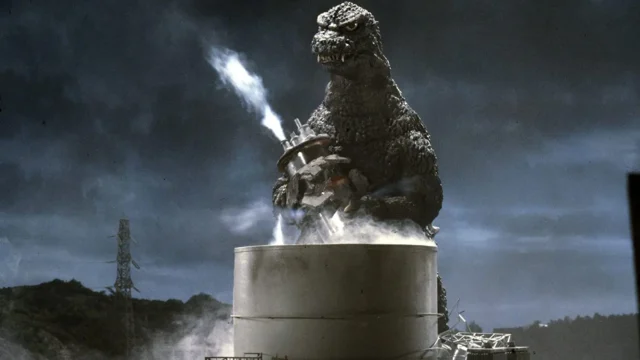
#2: Godzilla vs. Hedorah (1971)
Funnily enough, this is the film Toho hates the most. So much so that they blacklisted director Yoshimitsu Banno from ever helming a Godzilla film again. Banno was in talks to direct a sequel, but producer Tomoyuki Tanaka hated Godzilla vs. Hedorah so much that he ultimately fired him.
I wonder what parts he was so offended by because this is the Showa Era film that combines everything we’re supposed to love about monster moviemaking: larger-than-life action sequences, a prescient message on our environmental collapse, and even animated sequences to transition from one scene to the next.
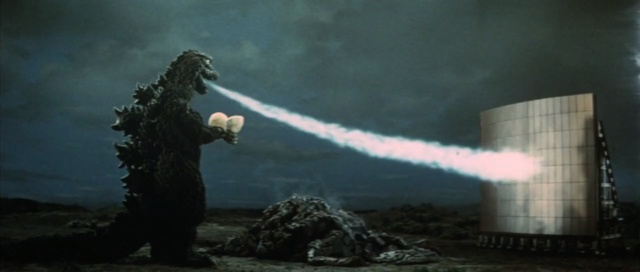
It even opens with a James Bond-esque theme song, hammering home its “peace & love” aesthetic that made me smile the entire time. Banno deserved better than to be trashed by Toho and have his directing career permanently tarnished because this film is a masterpiece, and I won’t hear otherwise.
#1: Godzilla: Final Wars (2004)
Oh yes, the true Avengers: Endgame of Godzilla movies is my favorite of the franchise. It combines everything previous Godzilla films introduced to the extreme: Galaxy-brained stories, out-of-this-world fight scenes, a banger of a soundtrack, and riveting human tales.
This one has the special presence of franchise alum Akira Takarada to cap off the best Godzilla movie and the return of the Xilians from Invasion of Astro-Monster. Oh, and Sum41 writes its Metal-inspired theme song.
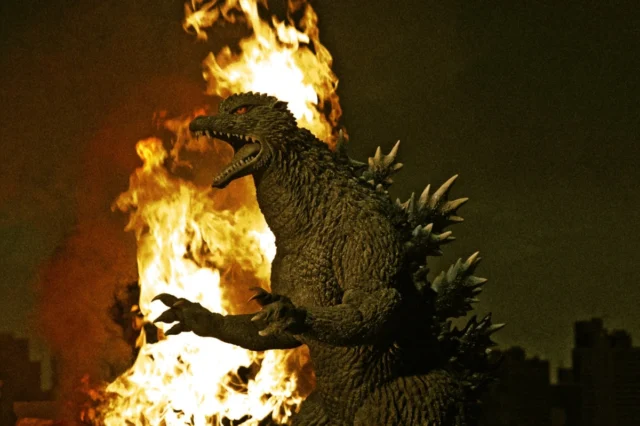
The best way I can describe it is as follows: Godzilla, but make it a Cyberpunk masala action movie. It has flourishes of The Matrix, Star Wars, Invasion of the Body Snatchers, and the maximalist grandeur of Bollywood all wrapped up into one glorious monster crossover package. They even bring back the 1998 Godzilla from the terrible Roland Emmerich film to NUKE IT INTO OBLIVION AFTER 30 SECONDS OF SCREEN TIME. 11/10. No notes.
That’s it for my live-action Toho Godzilla movie rankings!
And there you have it. These are my personal rankings of each live-action Toho Godzilla movie. If you’d like to have your own Godzilla marathon, but aren’t sure where to find these films, try a search on Just Watch. This site lists most of the films, whether or not they’re available to stream, and where.
What did you think of my list? Do you agree with it? What is your favorite Toho Godzilla movie? Let us know on social media @mycosmiccircus or on The Cosmic Circus Discord. For more of our Godzilla coverage, visit the archive!
Review: Monarch: Legacy of Monsters is an Entertaining Beast
Review: ‘Godzilla Minus One’ is a Monster Blockbuster Befitting the Franchise Legacy

